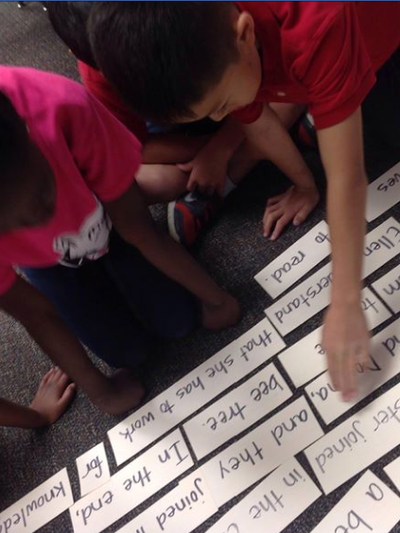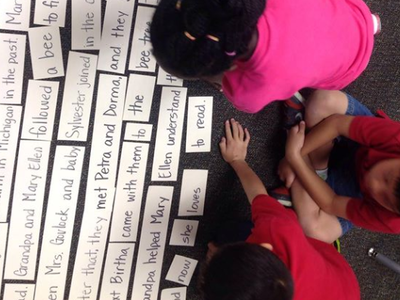|
GLAD Strategy: Cooperative Strip Paragraph What is the cooperative strip paragraph? The Cooperative Strip Paragraph is by far one of my favorite GLAD (Guided Language Acquisition Design) strategies because it promotes cooperative learning, reading and writing in all content areas. BAM! I first learned about it several years ago when I went through GLAD training. I used to be a certified GLAD trainer for my district (but we let our certification expire). The great thing is that even if your certification expires, the knowledge you've gained never does! Anyhow, I instantly fell in love with Cooperative Strip Paragraphs after using them with my own students. What I love most about CSP is that it allows my students to process their learning while they write in cooperative groups, practice reading at their own readability level, and go through the steps of revising and editing in an authentic way using a shared piece of work. And the fact that CSP can be used in any content area K-12 is an additional BONUS! CSP incorporates shared reading and shared writing. And it benefits my students who are struggling readers as well as my ELLs because they have multiple opportunities to read, read, read the text that we write together. Here’s how it works: Let’s say for example that we’ve been learning about the solar system (but it can be just about any topic or even a book)...
Also the teacher can recreate the piece on new sentence strips matching the colors. Then this can be used as a small group reading activity. The teacher will rearrange the strips and allow the group to rebuild it. And guess what!? They reread it again. All this reading practice is amazing for your ELLs and struggling readers. The gains they make are fabulous! After they have completed the task, the teacher can cut the sentence strips into smaller chunks and do some more rearranging and students can play again and reread! This can continue until the strips are cut down to a word. Relationship to State Testing Does your state have a standardized writing test? We do...and our ELLs usually don't do well on the revising and editing portion. But teaching revising and editing in isolation or with texts that aren't their own isn't relevant to students. They can't connect with the learning and carry it forward into application. The built in component of authentically revising and editing a piece of shared writing is arguably the most powerful part of CSP. Rather than having students practice using reading passages they are unfamiliar with and answer multiple choice questions, CSP relies on a more organic approach to practicing revising and editing. State testing has its value, but like many of you, I do not believe in teaching to a test. Tests change every year. Rather I'm a supporter in relying on the state curriculum standards. If we use those to guide our instruction, and we know our students well, then we should be able to help them do well on any assessment put in front of them. Let me know if you've used Cooperative Strip Paragraph before or if you plan on using it. Please share in the comments below. I would love to hear your experiences!
Tan
10/31/2017 01:12:47 am
Hi, Valentina.
Valentina
10/31/2017 08:30:27 pm
Thank you, Tan. It's a power research-based technique. Unfortunately, my district holds very strict guidelines for videotaping students.
Martha Compton
11/20/2019 03:51:22 pm
Thanks for this! I don't see your checklist linked. Am I missing it somewhere?
Peggy
11/5/2021 07:59:33 am
I am trying this today with 9th grade special ed (some of whom are also LEP). They really need help with paragraph writing and this looks like a great activity. Comments are closed.
|
Categories
All
|




 RSS Feed
RSS Feed
